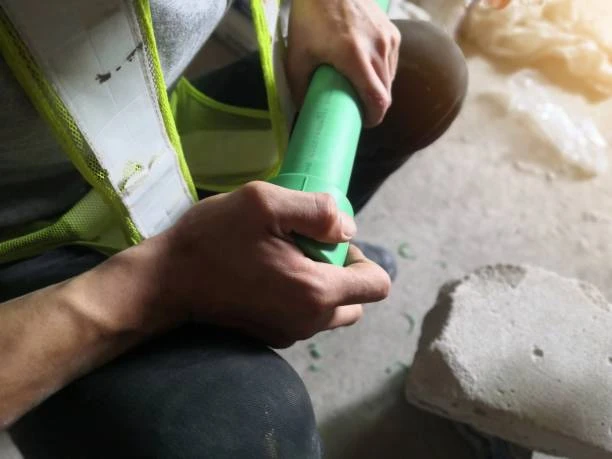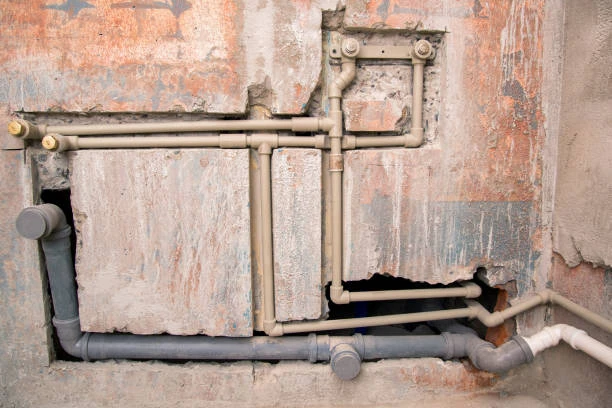Introduction
The PPR (Polypropylene Random Copolymer) pipes market in India has been witnessing remarkable growth over the past few years. With increasing urbanization, infrastructure development, and a rising demand for sustainable plumbing solutions, PPR Pipe are emerging as a preferred choice for many applications. This article provides a strategic assessment of the PPR pipe market in India, examining key trends, challenges, and future prospects.
Understanding PPR Pipe
PPR pipes are known for their durability, lightweight, and resistance to corrosion, making them suitable for a wide range of applications, including water supply, heating systems, and industrial uses.
1. Key Characteristics of PPR Pipes
- Durability: PPR pipes can last over 50 years, significantly reducing maintenance and replacement costs.
- Temperature Resistance: They can withstand temperatures ranging from -40°C to 95°C, making them ideal for both hot and cold water applications.
- Chemical Resistance: PPR is resistant to various chemicals, which makes it suitable for industrial applications.
The Current Market Landscape
1. Market Size and Growth Rate
The PPR pipe market in India is projected to grow at a substantial rate due to increasing infrastructure projects, housing developments, and a shift towards eco-friendly plumbing solutions.
2. Key Drivers of Growth
- Urbanization: Rapid urbanization has led to increased demand for efficient plumbing solutions in residential and commercial buildings.
- Government Initiatives: Government initiatives such as the Swachh Bharat Mission and Atal Mission for Rejuvenation and Urban Transformation (AMRUT) promote better sanitation and infrastructure development, further boosting the demand for PPR pipes.
- Sustainability Trends: As awareness of environmental issues grows, there is a shift towards sustainable materials like PPR, which are recyclable and have a lower carbon footprint.
Competitive Landscape
1. Key Players in the Market
The PPR pipe market in India is characterized by a mix of domestic and international manufacturers. Some prominent players include:
- Supreme Industries
- Ashirvad Pipes
- Finolex Industries
- Apollo Pipes
- PLUMBMAX
2. Market Share Analysis
These players hold significant market shares, driven by their extensive distribution networks, product innovations, and strong brand presence.
Challenges Facing the PPR Pipe Market
While the market shows promising growth, several challenges need to be addressed:
1. Quality Control Issues
The influx of low-quality PPR pipes in the market poses a risk to consumers and can tarnish the reputation of quality manufacturers. Ensuring stringent quality control measures is essential for maintaining market integrity.
2. Competition from Alternative Materials
Although PPR pipes offer several advantages, they face competition from other materials such as PVC, HDPE, and metal pipes. Manufacturers need to emphasize the unique benefits of PPR pipes to differentiate themselves.
3. Price Fluctuations of Raw Materials
The prices of raw materials used in PPR pipe production can fluctuate significantly, impacting manufacturing costs and profit margins. Companies must develop strategies to manage these costs effectively.

Strategic Opportunities
1. Innovation and Technology
Investing in innovative technologies can help manufacturers improve product quality and reduce production costs. For instance, incorporating advanced manufacturing techniques can enhance the efficiency of PPR pipe production.
2. Expanding Product Range
Manufacturers can consider expanding their product range to include specialized PPR pipes, such as those designed for specific industrial applications or with enhanced thermal insulation properties.
3. Geographic Expansion
There is significant potential for geographic expansion, particularly in rural areas where plumbing infrastructure is still developing. Targeting these markets can lead to increased sales and market penetration.
Future Trends in the PPR Pipe Market
1. Increased Adoption of Smart Plumbing Solutions
As technology advances, the integration of smart plumbing solutions into PPR systems is expected to rise. This includes sensors for leak detection and automated flow control, enhancing system efficiency.
2. Focus on Sustainable Practices
The shift towards sustainable practices will continue to drive demand for PPR pipes, as they are recyclable and produced with minimal environmental impact. Manufacturers that prioritize sustainability will likely gain a competitive edge.
3. Collaboration and Partnerships
Strategic collaborations between manufacturers, suppliers, and distributors can enhance market reach and operational efficiency. Such partnerships can also facilitate knowledge sharing and innovation.
Conclusion
The PPR Pipe market in India is poised for significant growth, driven by urbanization, government initiatives, and a growing emphasis on sustainability. By addressing challenges and seizing strategic opportunities, manufacturers can position themselves for success in this evolving market. As the demand for durable and efficient plumbing solutions continues to rise, PPR pipes will play a crucial role in shaping the future of India’s infrastructure.
FAQs
- What are PPR pipes used for?
- PPR pipes are used for hot and cold water supply, heating systems, and various industrial applications due to their durability and resistance to corrosion.
- How long do PPR pipes last?
- PPR pipes can last over 50 years with proper installation and maintenance.
- Are PPR pipes environmentally friendly?
- Yes, PPR pipes are recyclable and produced with minimal environmental impact, making them an eco-friendly choice.
- What factors are driving the growth of the PPR pipe market in India?
- Key drivers include urbanization, government initiatives for infrastructure development, and a growing emphasis on sustainable plumbing solutions.
- What challenges does the PPR pipe market face?
- Challenges include quality control issues, competition from alternative materials, and price fluctuations of raw materials.


















